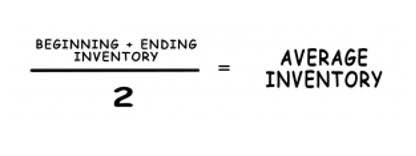
Failing either of those tests in two consecutive years could lead to a program losing access to federal financial aid. The Department will not calculate rates for a program if it does not have data for a sufficient number of completers for the cohort period. This would include situations in which an institution does not use the transitional reporting process and did not report completers for a particular program during all or part of the cohort period because it was not required to report enrollment at the program level during that period. The FVT/GE Completers List is created by NSLDS using your institution’s Enrollment Reporting data.
Can I work on the Program Level Report tile prior to completing the Student Level Report tile?
You will have multiple opportunities to address discrepancies on your Completers list by updating the data via our Enrollment Reporting service. You should start reviewing your Completers List to ensure your graduated students are included. Once your service is activated, our Clearinghouse Activations team will instruct you on how to request an ad hoc Completers list. As noted above, the Department will notify an institution of any restrictions on Departmental approvals of GE programs each time the D/E and EP measures are published. The process for calculating the annual earnings of students in the cohort is described above. The IRS does not provide the Department any individual earnings data or the identity of any students who were or were not matched because it is prohibited by law from doing so.

Company Announcements
The FVT/GE Students with no Program Enrollment Report (SHNPE1) will allow you to identify the students with a certified Campus Enrollment Status of ‘G’ and no certified programs. Schools can utilize the NSLDS Enrollment Reporting process to report the program data to ensure that your Completers List includes all eligible program graduates (completers). Your institution will validate the cohort file and add data on financial aid and financial transparency institutional costs (active students’ annual cost of attendance and graduates’ total costs of attendance).

My institution does not use DegreeVerify, will we still be presented with this list?
During the fall of 2023 the Department of Education (ED) released several regulatory packages that add new and expanded reporting requirements for institutions. This is because the reported information is used by the Department not only for the purpose of calculating the D/E and EP measures, but also for calculating some of the other information the Department will disclose on its website beginning in 2026. The FVT/GE Program Enrollment Detail Report (SHDPE1) provides school users with a list of all students and their certified program enrollment data as reported to NSLDS via the Enrollment Reporting process.
- If you need access to this document before the accessible versions are available, please contact the Information Technology Accessibility Program Help Desk at to help facilitate.
- Our FVT/GE solution creates a new and flexible data intake model that will give your institution more options for how it submits data to the Clearinghouse.
- They also do not include awards or other amounts provided to students that are not included in a student’s financial aid package as estimated financial assistance.
- The Clearinghouse is working directly with Central Processing System (CPS) for SAIG to finalize the TG mailbox designation for institutions participating in Clearinghouse FVT/GE.
- Additionally, in two separate April 2024 announcements, the Department launched a new FVT/GE topics page on the FSA Knowledge Center and released the first volume of its NSLDS Financial Value Transparency and Gainful Employment (FVT/GE) User Guide.
- Because Parent PLUS loans benefit the student, but must be repaid by the parent, they are not included in debt calculations for D/E rates or for program information.
The new FVT/GE regulations require institutions to report enrollment, institutional cost (a student’s annual cost of attending), and financial aid data. The Department of Education (ED) will use these reports in the following ways, which could affect student financial aid and enrollment at your institution. Only prospective students enrolled in certificate programs or graduate programs that have received a failing D/E rate are subject to the acknowledgement requirement. A prospective student must provide the acknowledgment before the institution enters into an agreement to enroll the student in one of these programs. The Department currently does not maintain information about an individual’s receipt of FWS and these students therefore cannot be included on an institution’s completer’s lists. Therefore, until such time as the Department can include such individuals using the data in its system, institutions are not required to take any action related to individuals who receive only FWS, including reporting.

- We also recognize that some schools may be interested in reporting their information sooner.
- Since the number of program completers may vary by year, the Department may use cohort periods of different lengths to calculate the rates for the same program in different years.
- The report selection type you choose will apply to your institution for the next six years of reporting to the NSLDS.
- All nondegree programs (e.g., certificate programs, diploma programs) that lead to recognized credentials at public and private nonprofit institutions are GE Programs except for CTP programs and prison education programs.
- Your institution can then use our secure site to access and update this list, as necessary — before we provide your updated list to NSLDS.
- NSLDS will create your school’s Draft and Final Completers List based on students certified with Program Enrollment Status of ‘G’ (Graduated), indicating the student has completed the program.
The Clearinghouse will offer an augmented supplemental process for institutions to use to provide us with their standard or transitional reporting in compliance with the deadline. This approach will 1) mitigate the burden on institutional IT teams to implement the needed student informational system (SIS) changes and 2) provide institutions with additional reporting flexibility so they can provide the new data elements and discrepancy resolutions to the Clearinghouse. Going forward, the Clearinghouse will collaborate with all major SIS vendors to determine how institutions can best integrate the additional data elements into their reporting processes. The FVT/GE act requires institutions to report extensive financial aid and institutional cost data elements during a time when they have no resources to spare to build and support complex new compliance processes.
More from Student Aid Policy
A program receiving an EP result without D/E rates is still subject to the same potential consequences for failing the EP metric. Programs do not need to have a result for both EP and D/E metrics for assessing potential consequences under the regulation. Once you have validated the student-level enrollment data in the cohort file and added all financial aid and institution cost data for each student record, you can upload the completed files, by award year, to the Clearinghouse. This could result in NSLDS not receiving a Graduated (G) enrollment status for a program the student completed. This inconsistency could be identified in an audit and impact your institution’s FVT/GE reporting by preventing the Graduated status from being accurately included in the Student Level Report and/or Completers list. An institution must determine whether it will use standard or transitional periods for reporting at the time that it first reports data to the Department.

After confirming with institutions the “completer list” for each educational program cohort (differentiated by using six-digit CIP codes), ED will obtain from a still-unspecified federal agency the “median annual earnings” of the completing cohort. If a program’s Annual D/E Rate exceeds 8% and its Discretionary D/E Rate exceeds 20%, it will be considered to fail the D/E metric and will be designated by ED as a “high debt burden” program. Note that a program “passes” the D/E rate metric if it passes the annual rate analysis but not the discretionary rate Record Keeping for Small Business analysis, or vice versa; a program must fail both the annual and discretionary D/E rate analysis to “fail” the D/E rate test overall. Furthermore, even for non-GE programs whose Title IV eligibility is not conditioned on passing D/E rates, institutions must nonetheless report the pertinent program and student-level data to allow ED to calculate D/E rates for all programs. Any institutional grants and scholarships not requiring repayment, however, are excluded. The amortization period applied to a student’s debt depends on the credential level of the program (as was true in the 2014 rule), and the interest rate applied to the calculation would be a specified three-year or six-year average also based on credential level.
Final Regulations: Financial Value Transparency and Gainful Employment
The evaluation of Completers Lists and submission of required data are performed separately. Schools do not need to finish their Completers List review before completing their required reporting, or vice versa. We will publish individual volumes of this user guide, beginning with the Introduction. Additional volumes assets = liabilities + equity will explore reporting methods (batch, web, spreadsheet submittal), reporting content, the FVT/GE Completers List, the FVT/GE calculations, and other relevant topics.


